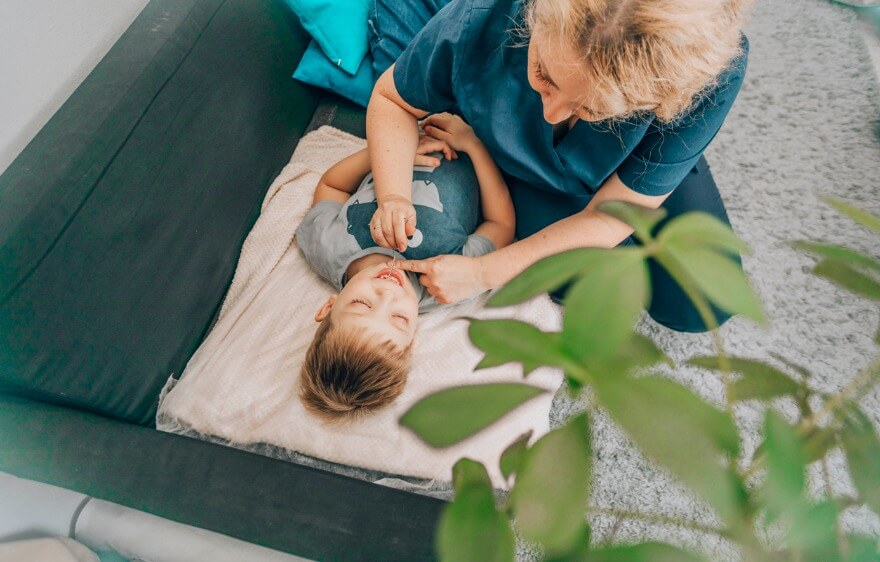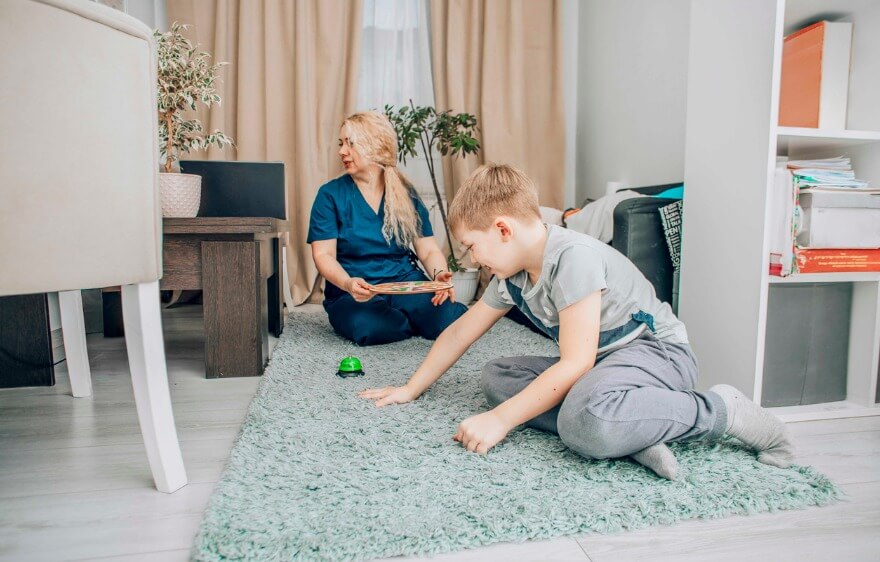Let’s explore the wonderful world of storytelling! Discover why it’s a fun and powerful tool for language development in our speech-language pathology (SLP) sessions. Get ready to unleash your creativity and captivate your young learners with the magic of narrative therapy!
Why Storytelling Spurs Language Development
Storytelling isn’t just about spinning tales. It’s a dynamic process that lights up various areas of language development. Here’s why it’s a goldmine:
- Contextual Learning: Stories provide a rich context for language learning. Kiddos encounter new words, sentence structures, and grammar concepts within the framework of a story, making it easier for them to understand and remember.
- Promotes Sequencing and Narrative Skills: Through storytelling, kids learn how to organize their thoughts and ideas sequentially. They grasp the concept of a beginning, middle, and end, which is crucial for coherent storytelling and language production.
- Encourages Creativity and Expression: Storytelling lets kids let their imaginations run wild. They expand their vocabulary and develop storytelling skills by inventing characters, settings, and plotlines.
- Enhances Social Interaction: Sharing stories is a social activity that promotes communication skills. Kids engage in dialogue, turn-taking, and understanding different perspectives, whether listening to a story or participating in storytelling activities.
Activities to Enhance Your SLP Sessions
1. Create Your Own Superhero and Origin Story
- Objective: Enhance narrative skills, vocabulary, and expressive language.
- Instructions: Let the kiddo create their own superhero, complete with a cool name, appearance, and superpowers. Then, help them craft an origin story detailing how they got their powers and their mission to help others. Finally, encourage them to narrate their superhero’s adventures with descriptive language and dialogue.
- Benefits: This activity sparks creativity, improves narrative structure, and boosts language expression while empowering kids to own their storytelling.
2. Write a Story and Create a Handmade Book
- Objective: Develop storytelling abilities, sequencing skills, and fine motor coordination.
- Instructions: Brainstorm story ideas with the child, including characters, settings, and plot elements. Help them write down their story or dictate it verbally. Then, guide them to create a handmade book by folding and stapling paper. Let them illustrate their story and add decorative touches to their book.
- Benefits: This activity fosters literacy skills, narrative organization, and fine motor development while instilling a sense of pride in creating their storybook.
3. Storytelling with Picture Prompts
- Objective: Develop comprehension, inferencing, and narrative retelling skills.
- Instructions: Provide the kiddo with picture prompts or story cards depicting various scenes or characters. Encourage them to create a story based on the images, incorporating details from each picture. Facilitate discussion and comprehension by asking questions about the story’s characters, settings, and events.
- Benefits: This activity strengthens narrative comprehension, inferential reasoning, and language processing skills while nurturing creativity and imagination.
Storytelling isn’t just a fun pastime; it’s a magical journey that unlocks the wonders of language for our young learners. By incorporating storytelling into our therapy sessions, we can engage kids in meaningful activities that promote language acquisition and literacy skills. Watch as the power of storytelling transforms therapy sessions into unforgettable experiences!
Join the Care Options For Kids Team!
Are you ready for meaningful work that comes with benefits and not burnout? Join the compassionate care team that helps children and families live their best lives. Our clinicians provide best-in-class pediatric nursing, therapy, and school-based services. We bring individualized care to children where they live, work, and play. We have opportunities in homes, schools, and clinics across the country.
Apply at Care Options for Kids now. We make it easy to get started, so you can begin making a difference as soon as possible.






